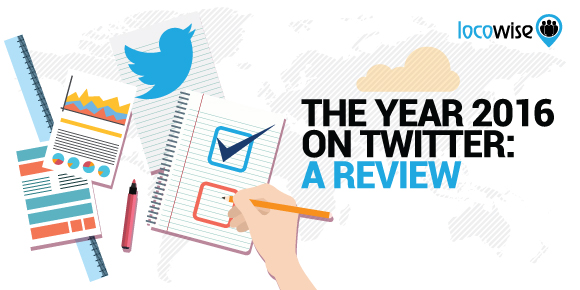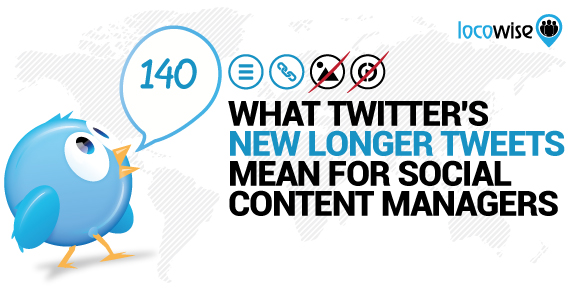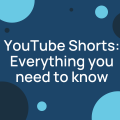The Year 2016 On Twitter: A Review
Sahail Ashraf posted on 9 January 2017
What a year it has been for Twitter. There have been numerous changes on the platform, so many in fact that we have struggled to bring you a concise article on it. We’re going to choose some of the key events this year on Twitter, and we think you’ll find that they, together, illustrate just how busy the platform has been in 2016.
Moments became a thing for everyone
Moments is rarely truly understood, but since this year, it has most definitely become something that brands should take notice of. The way it used to be, you had to be effectively invited or a VIP type person if you wanted to use Moments in your feed. The whole thing has been blown wide open now. Brands are picking up on how to use them since they became public domain.

And it’s a big step forward on the platform. Using Moments as part of your marketing is easier than you think, and they are excellent engagement tools. In fact, it should be the case that brands are using them to pull together some seasonal tweets, for example. Or a brand could use the option to collate the best tweets of 2016.
It’s all very exciting and a very pleasant way to boost engagement. As a part of 2016, they’re a big deal.
Verification
This is an odd one. This year, Twitter took the arguably unusual step of allowing everyone to request account verification. Having your account verified does still have an air of exclusivity to it. The idea behind account verifications is simple. If your account is of ‘public interest’ then it stands a chance of being verified.
This means a little blue check mark next to your account name. Prior to this year, this was seen as an incredibly exclusive club. This air of mystery is helped by the fact that Twitter would award verification to people and brands seemingly at whim when it felt that verification was justified. This meant that it was making a decision as regards which accounts were of public interest.
Now you can actually request to be verified. Therefore, you can ‘take a shot’ at being in the public interest and becoming a member of the club. The club is no longer as exclusive as it used to be. It was only the domain of celebrities who wanted to have their own legitimate account marked, to stand out against all the imposter accounts. But you still do not have a guarantee of being verified. At least it means there is more of a chance now.

The jury is still out regarding whether or not this is a worthwhile exercise, but if you ask any brand if they would like to have that blue mark against their Twitter handle, chances are they will say yes.
Retweeting
A welcome improvement on what was in place before, you can now retweet your own tweets. This is not just for people with big egos. If done right, it can prove to be a powerful branding tool.
This is about engagement. Imagine if you had your best tweet ever for engagement, one that still gets looked at and shared, months after the event. Now that you know you can retweet your own tweets, it is well worth your while doing it with this one.
Now you can easily Retweet or Quote Tweet yourself with just a few taps. Pick an old favorite and give it a try! https://t.co/bUj4ezQNOJ
— Twitter (@Twitter) June 14, 2016
The catch? Well, you can only retweet your own tweet once. This does sound a little stingy, but if you look at the idea it makes perfect sense. If you just retweeted your own tweets again and again, you’d end up looking pretty spammy. It’s a nice measured bonus for brands that work hard to build up tweets that are engaging, and one of the best things to come out of Twitter in 2016. It just goes to show that a small change can make a huge difference in social media marketing.
The biggie, tweet length
September brought the big change that everyone was expecting since Spring. This was when Twitter first announced it was going to relax the one characteristic that defined the platform. Since Twitter began, it has been famous for being a platform that was made for the brevity of expression. The limit was 140 characters, and that was that. Everyone loved it, and if they didn’t love it, they got used to it pretty fast.
But then the world changed. People started to become frustrated with the fact that 140 characters were actually quite limiting in certain ways. And what made it worse was the inclusion of quotes of other tweets, as well as other elements, that counted towards the 140 characters. Self expression (and marketing) was suffering.
Twitter listened to all of this moaning, and made the decision to change things. There is still, strictly, a 140 character limit. But what Twitter has done is to make all of those elements that hampered expression go away. Quoting tweets of someone else doesn’t count towards the 140 character limit, for example.
Photos don’t count. Polls, which have also almost defined Twitter, are no longer counting towards those 140 characters. So they haven’t moved away from the iconic 140 characters, they’ve just taken the pressure off by removing the weight.

It’s been a major change to Twitter, and perhaps the biggest thing in the year. By changing and not changing, they’ve kind of made the biggest change in their history (or something like that).
We can’t predict what Twitter will bring in 2017, but the changes above show that The Bluebird is not afraid to move forward. It can only move on for the better as far as we are concerned. Take a look at the changes above and see how you can alter your marketing for the better through using the improvements. Obviously, using metrics too helps you get to grips with what works and what doesn’t.





